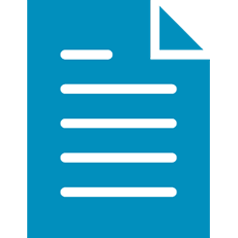The COVID-19 pandemic posed unprecedented challenges to health systems worldwide. The Government of Indonesia has allocated over US$14.9 billion for its COVID-19 health response from the start of the pandemic to August 2022. These funds enabled the expansion of a network of designated COVID-19 referral hospitals and laboratories as well as broad public risk communication. They were also used to provide incentives for health workers and free vaccines for children aged six and over and the entire adult population. A key consideration in global efforts to contain COVID-19 through vaccination relates to equity in vaccine outreach and prioritizing high-risk groups.
To support key aspects of Indonesia’s emergency response to the pandemic, World Bank swiftly approved an emergency US$250 million loan in May 2020, followed by an additional US$500 million loan in June 2021, as well as co-financing from AIIB, KfW, and DFAT, all of which amounts to an additional US$1 billion. In addition to improving hospital and health system readiness for COVID-19 response and strengthening public health laboratories, surveillance, and supply chain, the support was intended to facilitate effective public risk communication, vaccine demand and delivery, and maintain the provision of essential non-COVID health services
To document lessons from Indonesia’s public health risk communication interventions by assessing their effectiveness in improving knowledge and practice in infection prevention measures, generating equitable demand for vaccination, and reducing vaccine hesitancy. The findings from this study will inform the World Bank’s support to the Ministry of Health in understanding the challenges and best practices of Indonesia’s emergency response to the COVID-19 pandemic. The findings are crucial in improving the effective implementation of public health risk communication and emergency response at the national and sub-national levels
This study uses the following conceptual frameworks:
- Public health risk communication approaches on challenges, variations, and best practices regarding
- knowledge and practice on COVID-19 prevention,
- increasing demand for vaccinations and reducing vaccine hesitancy,
- different geographic areas, and
- multiple groups (based on gender, disability, residing in remote areas, etc.).
- Vaccination deployment strategies for priority groups and in different geographic areas and lessons learned for the future
- Key challenges and innovations in providing equitable access to COVID-19 testing
- Stakeholder maps in the national task force, which includes their roles, responsibilities, challenges, and enabling factors and lessons learned for future health.
The quantitative approach uses data from secondary sources to understand COVID-19 prevention behavior and vaccine hesitancy, which includes the High-Frequency Monitoring of COVID-19 Impacts survey (2020–2022), the COVID-19 National Task Force for Behavioral Change regarding Health Protocol Compliance Monitoring, Community Behavior Survey during the COVID-19 Pandemic from Statistics Indonesia, the sub-national COVID-19 task forces, the district health offices, and social media big data. Meanwhile, the qualitative approach uses primary qualitative data from ten districts collected through literature reviews, focus group discussions, and in-depth interviews using semi-structured guidelines.




